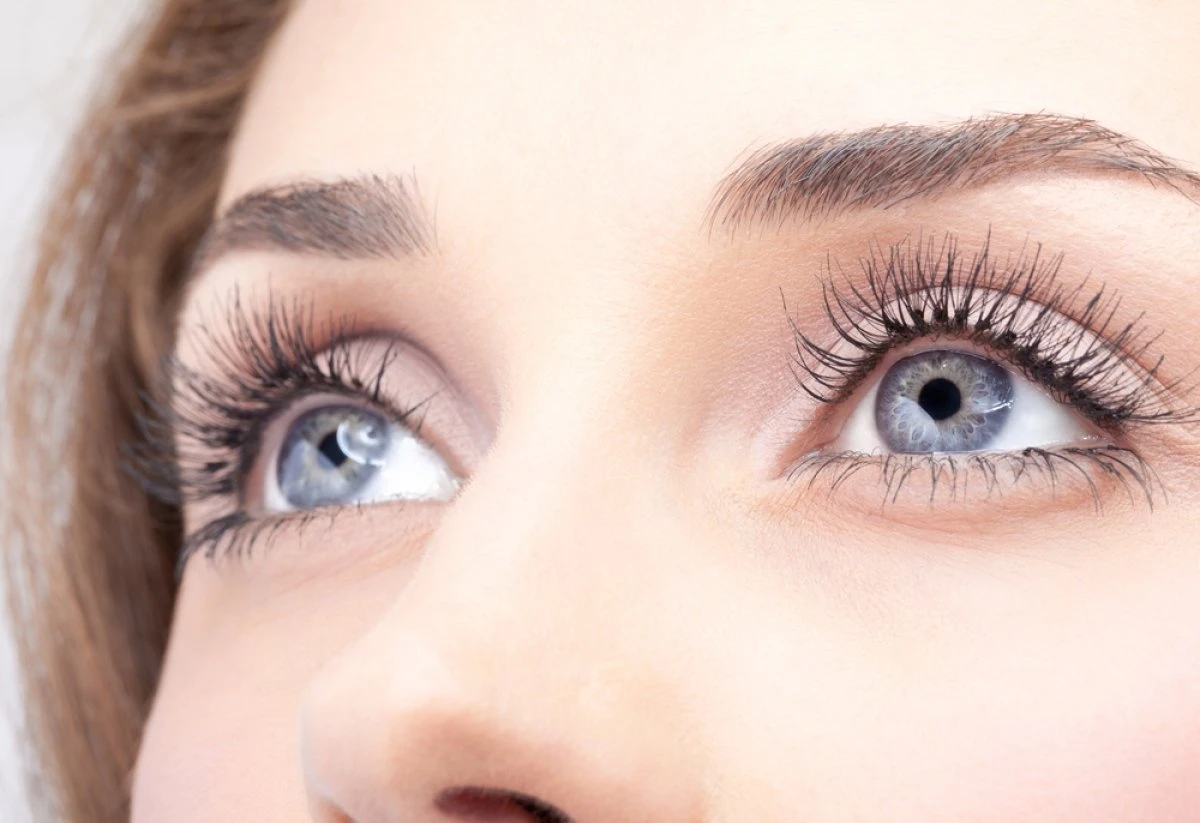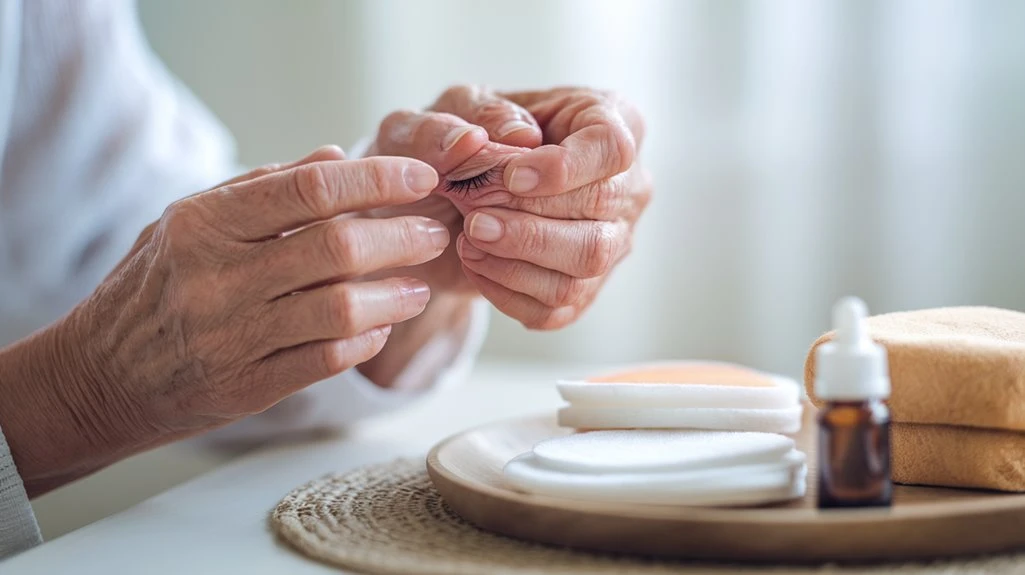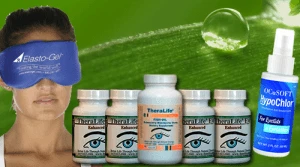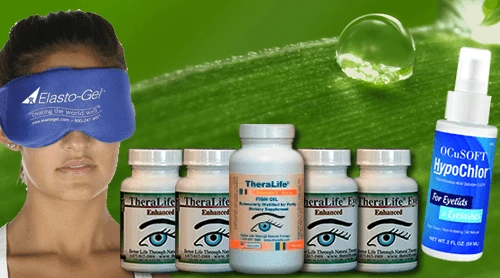TheraLife’s products offer a comprehensive approach to managing blepharitis and associated symptoms. Customers benefit from their focus on natural remedies and dietary adjustments, such as increasing omega-3 intake, which can significantly enhance eye comfort. TheraLife emphasizes the importance of early intervention and regular eye examinations to prevent and control symptoms effectively.
Their range of products includes options for daily eyelid hygiene, such as warm compresses and diluted cleansers, which are crucial for reducing eyelid redness, swelling, and crusting at the lash line. For persistent cases, TheraLife provides antibiotic ointments and even oral medications tailored to stubborn symptoms.
Additionally, TheraLife advocates for lifestyle changes and offers guidance on how to incorporate these adjustments into daily routines. This holistic approach ensures that customers receive not only immediate relief but also long-term management strategies for blepharitis. With TheraLife, individuals are equipped with the tools and knowledge to take control of their eye health and improve their quality of life.
Best Blepharitis Treatment From TheraLife- When Drops Don’t Work.
Key Takeaways
- Watch for eyelid redness, swelling, flaking, and gritty sensations as early signs of blepharitis.
- Practice daily eyelid hygiene using gentle cleansers and warm compresses to remove debris and crusts.
- Use topical antibiotic ointments, such as erythromycin or bacitracin, as prescribed to control infection and inflammation.
- Monitor tear production and seek professional evaluation if dryness, irritation, or persistent discomfort occur.
- Incorporate omega-3 fatty acids in your diet and take regular screen breaks to support eyelid and ocular surface health.
Recognizing Early Signs of Blepharitis
How can you tell if blepharitis is developing? You should monitor for early symptoms, as prompt recognition can facilitate effective management.
Blepharitis often starts with subtle eyelid irritation, such as a gritty or burning sensation along the lid margin. Patients may report a persistent urge to rub their eyes or an abnormal sensitivity to light. Increased tear production or, conversely, a feeling of dryness can occur.
You might also notice debris, or “collarettes,” accumulating at the base of the eyelashes—this material serves as an early clinical clue. Paying attention to these nonspecific but consistent symptoms allows for early intervention.
Chronic cases are common, especially in individuals with underlying skin conditions such as seborrheic dermatitis or rosacea, which can exacerbate symptoms and complicate treatment.
If you frequently experience these forms of eyelid irritation, it’s prudent to consult an eye care professional for objective evaluation and possible treatment initiation.
Identifying Redness and Swelling on Eyelids
Redness and swelling along the eyelid margins often signal the inflammatory phase of blepharitis. Clinically, you’ll notice erythema and localized edema at the base of the lashes, frequently accompanied by eyelid irritation. This presentation is highly indicative of underlying inflammation causes, such as bacterial colonization or seborrheic changes in the meibomian glands. Careful differentiation from allergic reactions or other dermatological disorders is essential for accurate diagnosis. It is also important to recognize that Demodex mites can exacerbate blepharitis by blocking meibomian glands and leading to dry eyes. Use the table below to compare clinical features:
| Feature | Blepharitis | Allergic Reaction |
|---|---|---|
| Redness distribution | Localized, lid margins | Diffuse, periorbital |
| Swelling | Focal, lid margin | Generalized, eyelids |
| Irritation | Common | Common |
| Inflammation causes | Bacterial, seborrheic | Allergen exposure |
| Associated symptoms | Burning, stinging | Itching, tearing |
Recognizing these signs expedites diagnosis and management.
Spotting Crusting and Flaking Around the Lash Line
Following the assessment of erythema and swelling, another hallmark of blepharitis is the presence of crusting and flaking at the lash line.
You’ll often notice yellowish or whitish debris adherent to the base of your eyelashes, which may be more prominent in the morning. This crusting is composed of skin cells, bacterial biofilm, and secretions from dysfunctional meibomian glands.
Clinically, it’s important to identify both the extent and consistency of these deposits, as persistent debris indicates ongoing inflammation. Mechanical debridement through gentle eyelid massages can help dislodge material and improve glandular function.
Evidence supports incorporating home remedies, such as warm compresses followed by careful cleansing, to aid in the removal of crust and reduce microbial colonization. Avoid aggressive scrubbing, as it may exacerbate local irritation. Regular eyelid hygiene is crucial in managing Meibomian gland dysfunction, a primary cause of blepharitis.
Assessing Changes in Tear Production and Eye Comfort
While many cases of blepharitis primarily involve visible changes around the lash line, evaluating alterations in tear production and overall eye comfort is essential for thorough evaluation.
You should monitor for symptoms such as dryness, burning, or foreign body sensation, which often arise from an unstable tear film.
In clinical practice, objective assessments like the Schirmer test can quantify tear production, while the tear breakup time (TBUT) test helps assess tear film stability.
Reduced eye lubrication not only exacerbates discomfort but also increases the risk of corneal and conjunctival irritation.
Accurate documentation of these findings will guide management strategies and tailor interventions, such as artificial tears or eyelid hygiene.
Inflammatory cytokines play a significant role in the development of dry eye disease, which can correlate with changes in tear dynamics and patient discomfort.
Recognizing shifts in tear dynamics is key to mitigating symptoms and improving patient outcomes in blepharitis.
Best Blepharitis Treatment From TheraLife- When Drops Don’t Work.
Differentiating Between Anterior and Posterior Blepharitis
Clear clinical distinction between anterior and posterior blepharitis is essential for effective management and targeted therapy.
Anterior blepharitis involves the eyelid margin and is typically characterized by inflammation around the base of the eyelashes. When you observe anterior characteristics, look for scaling, crusting, and erythema at the lash line. Staphylococcal and seborrheic etiologies frequently predominate, often presenting with collarettes or greasy debris.
In contrast, posterior symptoms reflect dysfunction of the meibomian glands, located within the tarsal plate. Here, you’ll notice gland orifice plugging, thickened or turbid meibum expression, and telangiectasia along the posterior eyelid margin.
Posterior blepharitis often correlates with evaporative dry eye and may present with burning, foreign body sensation, and fluctuating vision. This differentiation directs appropriate therapeutic approaches. Proper moisturizing post-cleaning maintains skin barrier and promotes healing, which is beneficial for managing blepharitis symptoms.
Practicing Proper Eyelid Hygiene Techniques
Once you’ve determined the type of blepharitis present, effective eyelid hygiene forms the cornerstone of ongoing management. Evidence suggests that daily cleansing is critical to reduce microbial load and debris around the lid margins. Use a sterile, lint-free pad moistened with diluted, preservative-free baby shampoo or a commercially available eyelid cleanser. Gently scrub the lid margin and lashes in horizontal motions. Incorporate gentle eyelid massage, using the fingertips, to express meibomian secretions—especially beneficial for posterior blepharitis. Consistency in your hygiene routine leads to symptomatic relief and prevents recurrences. For those experiencing chronic dry eyes, maintaining eyelid hygiene is especially crucial to break the cycle of inflammation and blepharitis.
Here’s a look at the impact of these practices:
| Regular Hygiene | Inconsistent Care |
|---|---|
| Comfortable, clear eyes | Persistent irritation |
| Reduced inflammation | Frequent flare-ups |
| Greater confidence | Ongoing frustration |
Using Warm Compresses for Symptom Relief
Applying warm compresses two to four times daily plays a critical role in managing blepharitis symptoms.
The warm compress benefits include the liquefaction of meibomian gland secretions and improvement of eyelid margin circulation, which facilitate drainage and reduce inflammation. Evidence demonstrates that consistent compress application techniques alleviate anterior and posterior blepharitis symptoms by softening crusting and debris along the lash line. Eyelid cleansers are essential for managing blepharitis as they reduce microbial load and ocular surface inflammation.
For optimal results, use a clean washcloth soaked in comfortably hot water (not scalding). Apply it with gentle pressure over closed eyelids for at least 5–10 minutes per session. Maintain consistent temperature throughout the process to maximize therapeutic efficacy.
Incorporating systematic, scheduled compresses into your daily regimen can considerably decrease discomfort, redness, and irritation, promoting ocular surface health and restoring eyelid function.
Applying Topical Antibiotic Ointments
When treating blepharitis, you should select antibiotic ointments with proven efficacy against common eyelid pathogens. It’s essential that you understand correct application techniques to maximize drug contact time and minimize contamination. Regular eyelid hygiene is crucial to minimize symptom recurrence and avoid complications such as chronic dry eyes. You also need to monitor for possible side effects, such as local irritation or allergic reactions, during the course of therapy.
Choosing Effective Ointments
Selecting an appropriate topical antibiotic ointment is critical in managing blepharitis associated with bacterial overgrowth. When choosing an ointment, you should carefully review ointment ingredients, as some patients may have sensitivities or allergies to certain formulations. Common choices include erythromycin and bacitracin; both show efficacy against typical eyelid flora. It’s essential to confirm the selection aligns with the culture results when available, optimizing antimicrobial coverage. Additionally, application frequency directly affects therapeutic outcomes. Most regimens require use once or twice daily, but you need to follow your clinician’s instructions closely. Studies support warm compress therapy for increasing tear film stability and reducing inflammation, making it a crucial part of a comprehensive treatment plan.
| Ointment Ingredient | Typical Application Frequency |
|---|---|
| Erythromycin | 1-2 times daily |
| Bacitracin | 1-2 times daily |
| Fusidic acid | Once daily |
Always prioritize product tolerability and evidence of effectiveness for blepharitis.
Application Techniques Explained
Proper technique during ointment application greatly enhances therapeutic outcomes for blepharitis. To maximize efficacy, start with clean hands and gently cleanse your eyelid margins. Squeeze a small amount of topical antibiotic ointment onto a sterile cotton swab or clean fingertip—this minimizes contamination risk. With your lower eyelid pulled down, apply the ointment directly to the eyelid margin, not the conjunctival sac. Employ gentle eyelid massage in a circular motion; this promotes uniform distribution of the medication, improves penetration at the lash follicles, and helps loosen crusts. Evidence-based guidelines recommend repeating these application methods at the prescribed frequency, typically once or twice daily. Consistent adherence guarantees ideal antimicrobial coverage and disrupts the bacterial biofilm implicated in blepharitis pathogenesis. Remember that eye hygiene is essential in managing blepharitis, as it reduces bacterial growth and prevents flare-ups. Follow your clinician’s instructions for best outcomes.
Possible Side Effects
Even with ideal application strategies, topical antibiotic ointments can result in local side effects. You may notice transient stinging, burning, redness, or mild eyelid swelling at the site of application.
These side effects typically resolve after discontinuing treatment, but it’s important to monitor for persistent discomfort or worsening symptoms. Hypersensitivity reactions, though rare, present as significant redness, itching, or a rash and indicate the need to halt therapy immediately.
Some patients report blurred vision right after applying ointments—this resolves quickly and isn’t usually harmful. Recognizing these potential complications allows you to weigh possible treatments in the context of risk versus benefit.
If you experience intolerable side effects, notify your ophthalmologist; they can recommend alternative possible treatments tailored to your tolerance and therapeutic needs.
Considering Oral Medications for Persistent Cases
When conventional topical therapies fail to control blepharitis symptoms, clinicians may consider oral medications as adjunctive treatment.
Oral therapy options commonly include tetracycline-class antibiotics, such as doxycycline and minocycline, which possess both antimicrobial and anti-inflammatory properties. These agents target chronic posterior blepharitis and are particularly effective for meibomian gland dysfunction.
Macrolides like azithromycin may serve as alternatives, especially if you have contraindications to tetracyclines.
It’s crucial to monitor for medication side effects; doxycycline, for example, can cause gastrointestinal upset, photosensitivity, and, rarely, esophageal irritation. Macrolides may cause gastrointestinal disturbance or, infrequently, cardiac arrhythmias.
Selecting an oral agent requires a careful assessment of your medical history and potential drug interactions. Short-term, low-dose regimens are preferred to minimize adverse effects while optimizing therapeutic outcomes.
Best Blepharitis Treatment From TheraLife- When Drops Don’t Work.
Seeking Professional Evaluation and Ongoing Management
You should prioritize regular ophthalmic evaluations to monitor disease progression and assess for complications such as corneal involvement or secondary infections.
Evidence supports that ongoing management, including tailored lid hygiene protocols and periodic clinical reviews, helps reduce recurrence rates.
Collaborating with your eye care professional guarantees you receive individualized, long-term care based on evolving clinical findings.
Importance of Eye Exams
Because blepharitis often presents with persistent or recurrent symptoms, extensive eye exams remain critical for accurate diagnosis and effective management. Routine ophthalmic assessments allow you to monitor subtle changes, promote ocular surface health, and mitigate complications. Early detection facilitates prompt intervention, reducing the risk of chronic discomfort or irreversible eyelid margin changes. Evidence shows that regular exams enhance treatment outcomes, as clinicians can tailor therapies according to disease severity and evolution. By prioritizing scheduled evaluations, you’re ensuring thorough care and vigilance for associated pathologies like dry eye or meibomian gland dysfunction.
| Clinical Benefit | Description |
|---|---|
| Early Detection | Identifies subtle symptoms before complications develop |
| Accurate Diagnosis | Differentiates blepharitis from other ocular conditions |
| Individualized Care | Enables tailored, evidence-based treatment plans |
| Risk Management | Monitors for related disorders and complications |
| Monitoring Progression | Tracks response to therapy and adjusts interventions |
Long-Term Care Strategies
Although initial treatment can control acute symptoms of blepharitis, sustained improvement requires ongoing professional evaluation and maintenance strategies.
You should schedule regular follow-ups with your eye care provider to assess inflammation and adjust management plans as needed. Persistent cases often benefit from lifestyle modifications—such as minimizing eye rubbing, maintaining ideal eyelid hygiene, and avoiding environmental irritants.
Evidence suggests that incorporating dietary adjustments, particularly increased intake of omega-3 fatty acids, may enhance meibomian gland function, improving tear film stability and reducing inflammation.
Don’t hesitate to discuss persistent symptoms or recurrence with your clinician, as chronic blepharitis sometimes requires rotating topical or systemic therapies.
Close monitoring guarantees early identification of complications, supports adherence to regimens, and promotes long-term ocular surface health.
Best Blepharitis Treatment From TheraLife- When Drops Don’t Work.
Frequently Asked Questions
Is Blepharitis Contagious to Others Through Direct Contact?
You might wonder about blepharitis transmission through direct contact.
Clinically, blepharitis isn’t typically considered contagious, since it’s often caused by bacterial overgrowth, seborrheic dermatitis, or dysfunction of Meibomian glands.
However, in rare instances where an infectious agent (such as Staphylococcus species) is involved, limited transmission could theoretically occur via contaminated towels or hands.
You should maintain strict eyelid hygiene and avoid sharing personal items to minimize any possible risk of direct contact transmission.
Can Diet or Allergies Contribute to Blepharitis Outbreaks?
Think of your body as a finely tuned machine—what you fuel it with matters. Evidence shows that allergies and poor diet can trigger or worsen blepharitis flare-ups.
Allergic reactions elevate inflammation in the eyelids, while nutritional gaps—like omega-3 deficiency—can impair tear production. You can reduce outbreaks by implementing dietary adjustments (such as increasing omega-3s) and focusing on allergy management.
These strategies bolster ocular surface health and minimize symptom recurrence.
Should I Stop Wearing Contact Lenses if I Have Blepharitis?
If you have blepharitis, you should temporarily discontinue contact lens use, since inflammation can reduce ocular surface health and increase infection risk.
Good contact lens hygiene is essential for effective blepharitis management; wearing lenses during an active outbreak may exacerbate symptoms or complicate treatment.
Resume lens wear only when your symptoms resolve and your eye care provider confirms it’s safe.
Always follow clinical recommendations regarding cleaning, replacement, and contact lens hygiene practices.
Are There Any Long-Term Complications Associated With Untreated Blepharitis?
Don’t let your guard down with untreated blepharitis, as chronic inflammation can open a can of worms over time.
You’ll risk persistent eye discomfort, blurry vision, recurrent styes, or even eyelash loss. Evidence shows unaddressed blepharitis increases your chances of developing conjunctivitis, keratitis, and damage to the tear film, which compromises ocular surface health.
Clinically, early intervention is essential to prevent these long-term complications and maintain ideal eye function.
Do Home Remedies Like Tea Tree Oil Help With Blepharitis?
You might consider tea tree oil and other natural remedies for blepharitis, but clinical evidence suggests mixed results.
Studies indicate tea tree oil (diluted) can help reduce Demodex mite infestation contributing to blepharitis, yet it’s important to use formulations designed for ophthalmic use, as undiluted tea tree oil may cause skin irritation.
Natural remedies like warm compresses can also alleviate symptoms, but you shouldn’t substitute these for physician-guided treatment if symptoms persist.
Best Blepharitis Treatment From TheraLife- When Drops Don’t Work.
Conclusion
By staying attentive to subtle eyelid changes and adopting TheraLife’s gentle interventions, customers can effectively manage blepharitis. TheraLife’s evidence-based products, such as thermal hygiene solutions and topical agents, provide targeted relief to maintain ocular comfort and function. Their comprehensive approach, which may include systemic support, ensures even persistent cases are managed effectively. With TheraLife’s proactive care solutions and regular guidance from an eye specialist, customers can transform blepharitis from a significant concern into a manageable aspect of their ocular health journey.





